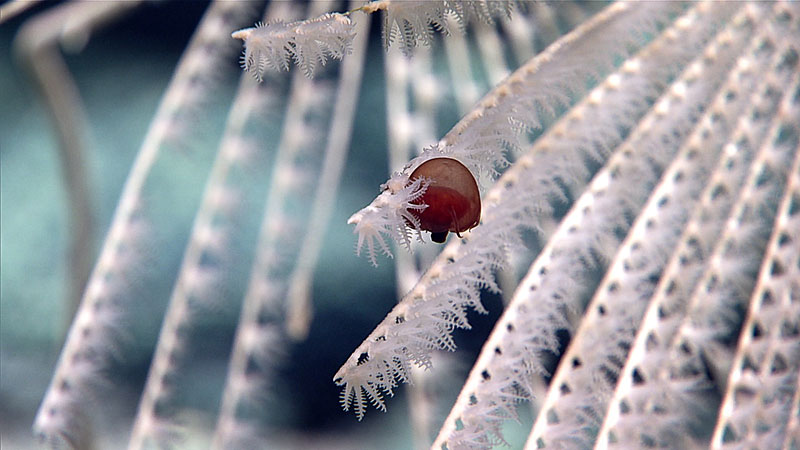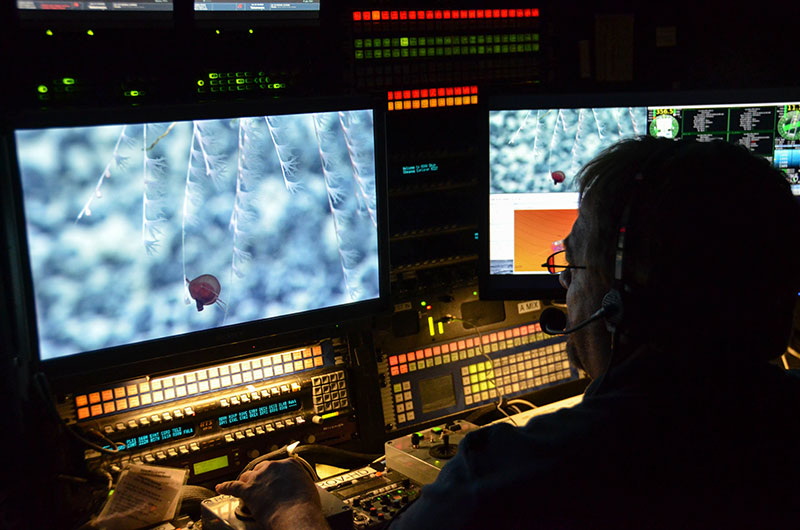-

One notable cnidarian on this dive, the hydrozoan jellyfish Aegina, is a small medusae which feeds on the polyps of bamboo corals. Image courtesy of the NOAA Office of Ocean Exploration and Research, 2017 Laulima O Ka Moana. Download larger version (jpg, 1.4 MB).
-

Global Foundation for Ocean Exploration Video Engineer Roland Brian adjusts the zoom, focus, and lighting on remotely operated vehicle Deep Discoverer’s main HD camera to obtain the best shot of a tiny jellyfish. Image courtesy of the NOAA Office of Ocean Exploration and Research, 2017 Laulima O Ka Moana. Download larger version (jpg, 3.2 MB).
-
This hydrozoan jellyfish, Aegina, was seen while exploring a site unofficially deemed "Sleepy Hollow Seamount." The jelly is a small medusae known to feed on the polyps of bamboo corals. Video courtesy of the NOAA Office of Ocean Exploration and Research, 2017 Laulima O Ka Moana.. Download larger version (mp4, 27.8 MB).